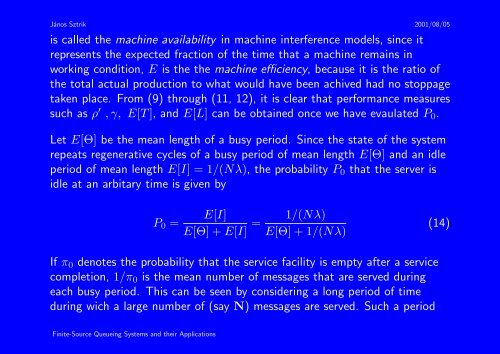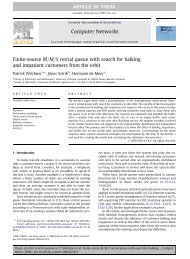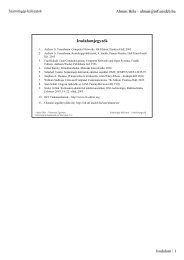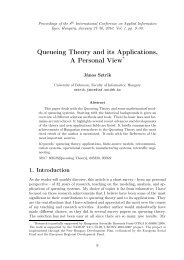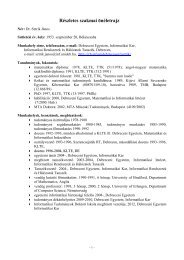Finite-Source Queueing Systems and their Applications
Finite-Source Queueing Systems and their Applications
Finite-Source Queueing Systems and their Applications
You also want an ePaper? Increase the reach of your titles
YUMPU automatically turns print PDFs into web optimized ePapers that Google loves.
János Sztrik 2001/08/05<br />
is called the machine availability in machine interference models, since it<br />
represents the expected fraction of the time that a machine remains in<br />
working condition, E is the the machine efficiency, because it is the ratio of<br />
the total actual production to what would have been achived had no stoppage<br />
taken place. From (9) through (11, 12), it is clear that performance measures<br />
such as ρ ′ , γ, E[T ], <strong>and</strong> E[L] can be obtained once we have evaulated P0.<br />
Let E[Θ] be the mean length of a busy period. Since the state of the system<br />
repeats regenerative cycles of a busy period of mean length E[Θ] <strong>and</strong> an idle<br />
period of mean length E[I] = 1/(Nλ), the probability P0 that the server is<br />
idle at an arbitary time is given by<br />
P0 =<br />
E[I]<br />
E[Θ] + E[I] =<br />
1/(Nλ)<br />
E[Θ] + 1/(Nλ)<br />
If π0 denotes the probability that the service facility is empty after a service<br />
completion, 1/π0 is the mean number of messages that are served during<br />
each busy period. This can be seen by considering a long period of time<br />
during wich a large number of (say N) messages are served. Such a period<br />
<strong>Finite</strong>-<strong>Source</strong> <strong>Queueing</strong> <strong>Systems</strong> <strong>and</strong> <strong>their</strong> <strong>Applications</strong><br />
(14)


